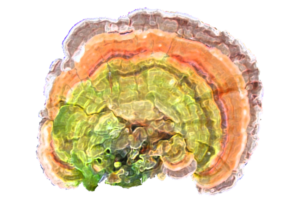Jae-Heung Park, Kyung-Jun Jang, Cheol-Hong Kim, Jung-Hee Kim, Young-Kyun Kim, Hyun-Min Yoon
Abstract
Objectives:
The stomach is a sensitive digestive organ that is susceptible to exogenous pathogens from the diet. In response to such pathogens, the stomach induces oxidative stress, which might be related to the development of both gastric organic disorders such as gastritis, gastric ulcers, and gastric cancer, and functional disorders such as functional dyspepsia. This study was accomplished to investigate the effect of Ganoderma lucidum pharmacopuncture (GLP) on chronic gastric ulcer in rats.
Methods:
The rats were divided into 4 groups of 8 animals each: the normal, the control, the normal saline (NP) and the GLP groups. In this study, the modified ethanol gastritis model was used. The rats were administrated 56% ethanol orally every other day. The dose of ethanol was 8 g/kg body weight. The normal group received the same amount of normal saline instead of ethanol. The NP and the GLP groups were treated with injection of saline and GLP respectively. The control group received no treatment. Two local acupoints CV12 (中脘) and ST36 (足三里) were used. All laboratory rats underwent treatment for 15 days. On last day, the rats were sacrificed and their stomachs were immediately excised.
Results:
Ulcers of the gastric mucosa appeared as elongated bands of hemorrhagic lesions parallel to the long axis of the stomach. In the NP and GLP groups, the injuries to the gastric mucosal injuries were not as severe as they were in the control group. Wound healings of the chronic gastric ulcer was promoted by using GLP and significant alterations of the indices in the gastric mucosa were observed. Such protection was demonstrated by gross appearance, histology and immunehistochemistry staining for Bcl-2-associated X (BAX), B-cell lymphoma 2 (Bcl-2) and Transforming growth factor-beta 1 (TGF-β1).
Conclusion:
These results suggest that GLP at CV12 and ST36 can provide significant protection to the gastric mucosa against an ethanol induced chronic gastric ulcer.
Reference:
J Pharmacopuncture. 2015 Mar; 18(1): 72–78

